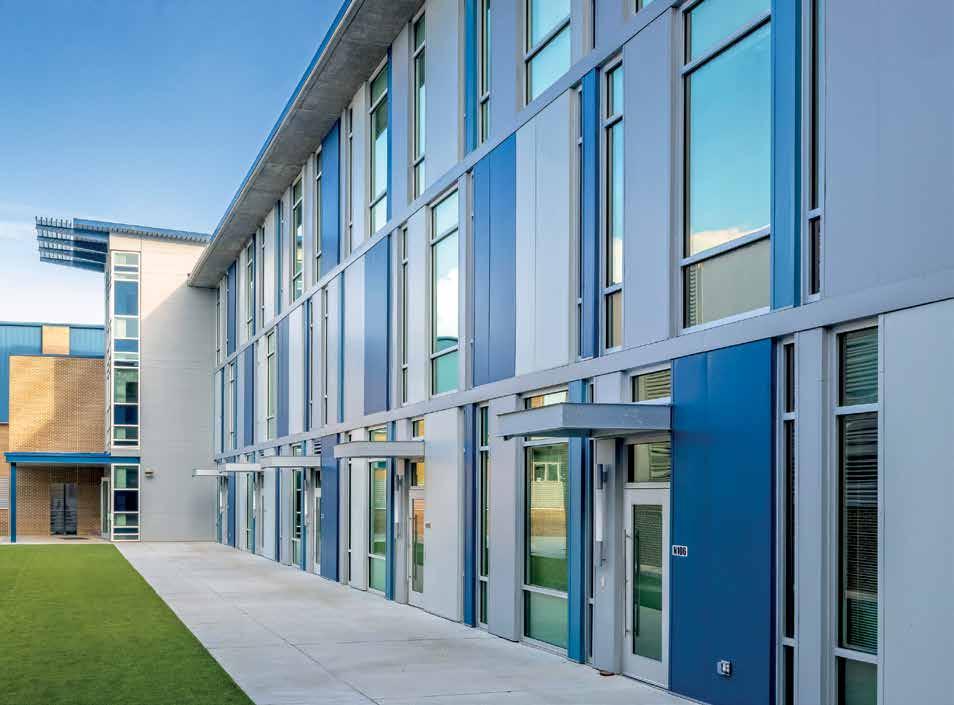
1 minute read
Tangipahoa Parish Library Main Branch
from Design for Life
Amite, Louisiana
The new Tangipahoa Parish Library Headquarters is two stories, comprising 19,948 sq. ft. Because the site is a long and narrow piece of property that spans across the entire block, the design uses this as an opportunity to connect the downtown with the historic residential neighborhood. The building sits close to the street on the downtown side. It allows for visitor parking in the rear. Although the primary entrance is located on the west side facing the railroad tracks, the building can also be entered from the east. At the western entry, visitors are greeted by an outdoor plaza, followed by a fenced-in children’s courtyard. A portion of the building extends out closer to the street on the northwest. This piece houses the public meeting room with a rooftop terrace above. Upon entering, the visitor is guided through the library along a main spinal circulation corridor extending through to the rear parking. All public library functions are located to the right while administration and library staff positioned along the left. This spinal circulation space is expressed in the building’s architecture and repeated on the second floor. This planning tool allows for clarity in wayfinding and simplicity in the organization of the library functions. The public library portion includes a large area for the children’s library, a multi-media and browsing area, a young adult area, fiction, and non-fiction, and finally, a closed-off quiet area called the “living room.”
On the second floor is the local history/ genealogy area. This space is situated within a double-height volume, which over-looks into the first-floor library spaces. There is a public-use computer lab directly across from the local history area and access to the public-use roof terrace. The design utilizes daylighting strategies to harvest natural light, allowing the library to function with natural lighting only for most of the day. Daylighting provides greater energy savings and better quality of light for reading.







